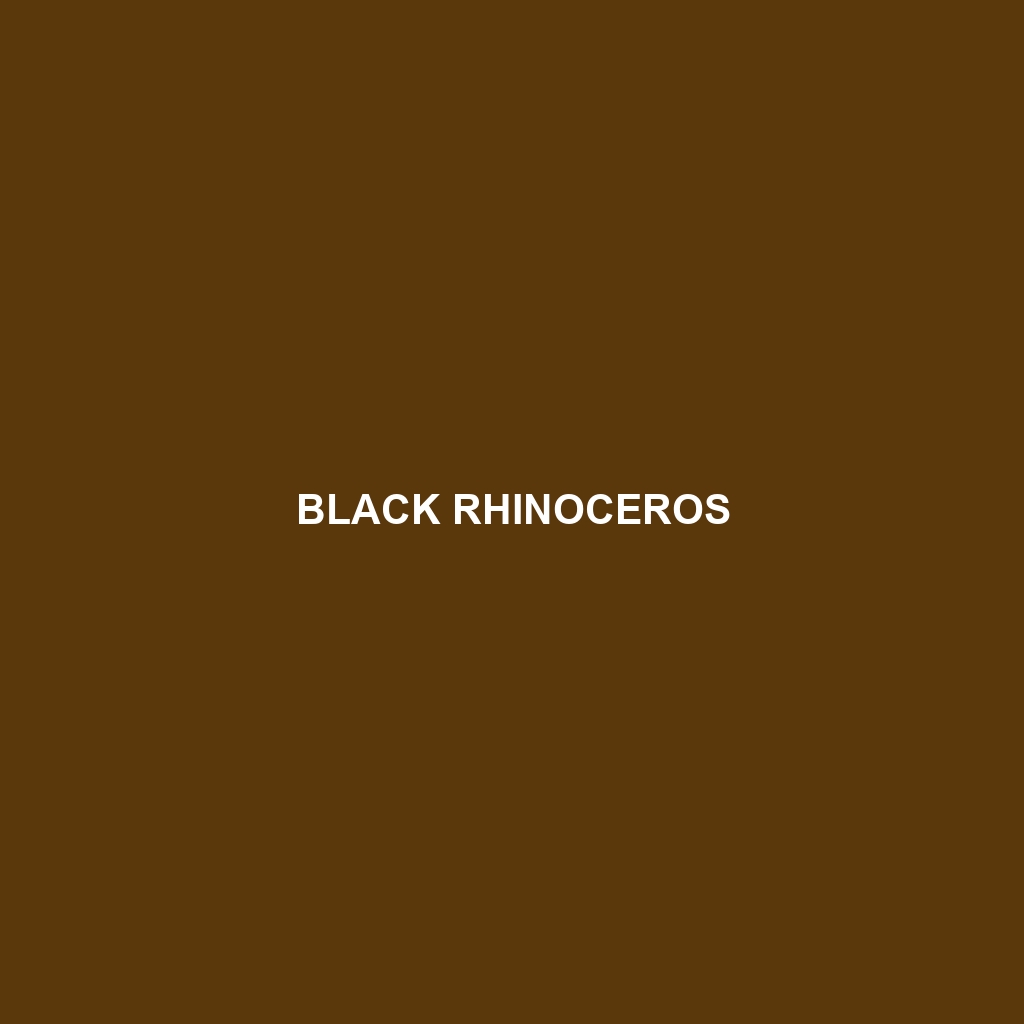Sumatran Rhinoceros
Common Name: Sumatran Rhinoceros
Scientific Name: Dicerorhinus sumatrensis
Habitat:
The Sumatran Rhinoceros is primarily found in the dense tropical forests of Sumatra and Borneo. This species prefers mountainous and hilly terrains where humidity and rainfall are high, facilitating a lush growth of vegetation. Their habitat spans various protected areas, such as the Bukit Barisan Selatan National Park and the Gunung Leuser National Park, where rich biodiversity supports their survival.
Physical Characteristics:
The Sumatran Rhinoceros is the smallest of the extant rhinoceros species, typically measuring between 2.5 to 3.1 meters in length and weighing around 500 to 1,000 kilograms. They possess a distinctive reddish-brown, hair-covered skin that appears folded, which adds to their unique shape. Their small size, along with short legs and two prominent horns, makes them easily identifiable. The front horn can reach up to 25 centimeters, while the rear horn is often smaller.
Behavior:
Sumatran Rhinos are primarily solitary creatures, exhibiting elusive behavior. They are largely nocturnal, spending their days resting in dense vegetation and becoming active at night to forage. Communication is vital for these animals; they use vocalizations, scents, and territorial markings to communicate with one another and establish home ranges. Their ability to travel long distances in search of food contributes to their reclusive nature.
Diet:
The Sumatran Rhinoceros is herbivorous, with a diet that consists of a variety of leaves, fruits, and shoots. They particularly favor tough, fibrous plants and are known to consume over 50 different plant species in their natural habitat. This diet helps maintain their health and supports the ecosystems they inhabit, as they play a role in seed dispersal.
Reproduction:
Reproductive habits of the Sumatran Rhinoceros involve a lengthy gestation period of about 15-16 months. Breeding typically occurs throughout the year, although peaks may occur during wetter seasons. Offspring, called calves, usually weigh around 30 kilograms at birth and stay with their mothers for an extended period, learning vital survival skills. Mothers are known to be very protective of their young, ensuring their safety in the wild.
Conservation Status:
The Sumatran Rhinoceros is classified as critically endangered by the IUCN Red List. With fewer than 80 individuals estimated to remain in the wild, habitat loss and poaching pose significant threats to their survival. Conservation efforts are crucial to secure the future of this remarkable species.
Interesting Facts:
Despite their name, Sumatran Rhinos are often called “hairy rhinos” due to their unique hairy skin. They are the only rhino species with two distinct horns, and their thick skin is formed into several folds, which protects them from harsh environmental conditions. Furthermore, Sumatran Rhinos are the closest living relatives of the extinct woolly rhinoceros.
Role in Ecosystem:
As herbivores, Sumatran Rhinos play a critical role in their ecosystem by feeding on plants and helping to shape the forest structure. This feeding behavior promotes plant diversity and assists in seed dispersal, which supports healthy forest regeneration. Their existence is vital for maintaining the balance within their natural habitats, highlighting the necessity for their conservation.
